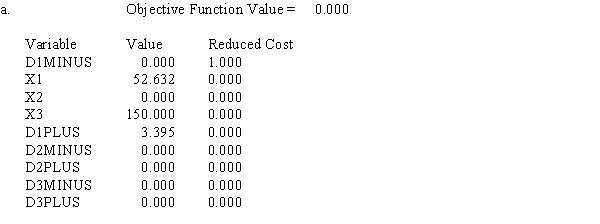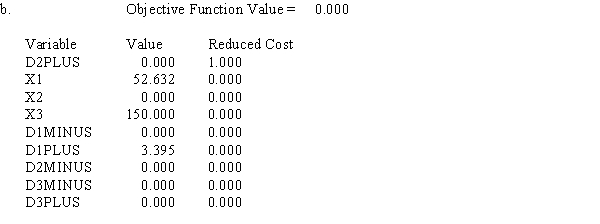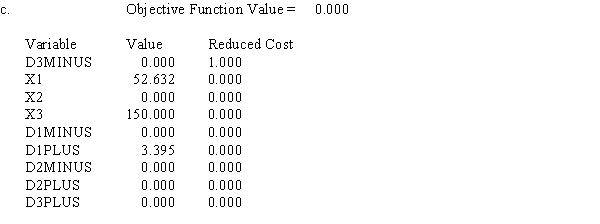The goal programming problem below was solved with the Management Scientist.
Min
P1(d1−) + P2(d2+) + P3(d3−)
s.t.
72x1 + 38x2 + 23x3 ≤ 20,000
.72x1 − .76x2 − .23x3 + d1− − d1+ = 0
x3 + d2− − d2+ = 150
38x2 + d3− − d3+ = 2000
x1, x2, x3, d1−, d 1+, d2−, d2+, d3−, d3+ ≥ 0
Partial output from three successive linear programming problems is given. For each problem, give the original objective function expression and its value, and list any constraints needed beyond those that were in the original problem. 


Definitions:
Predefined Method
Functions or procedures provided by a programming language or library that can be used directly without the need for the user to define them.
Parameter Type
Refers to the datatype of a parameter accepted by a function or method in programming.
Import Statement
A directive used in many programming languages that brings in code from external modules, libraries, or namespaces into the current program.
Java.lang Package
The package in Java that provides classes that are fundamental to the design of the Java programming language.
Q1: Dynamic programming is a general approach rather
Q7: Consider a setting in which there is
Q15: Explain the concept of memorylessness.
Q19: The optimal solution is found in an
Q21: The EOQ model<br>A) determines only how frequently
Q43: As the owner of a rent-a-car agency
Q45: In the single-period inventory model with probabilistic
Q45: A hospital records the number of floral
Q60: Explain the differences between a corporate bond,
Q82: Which of the following statements is false?<br>A)A